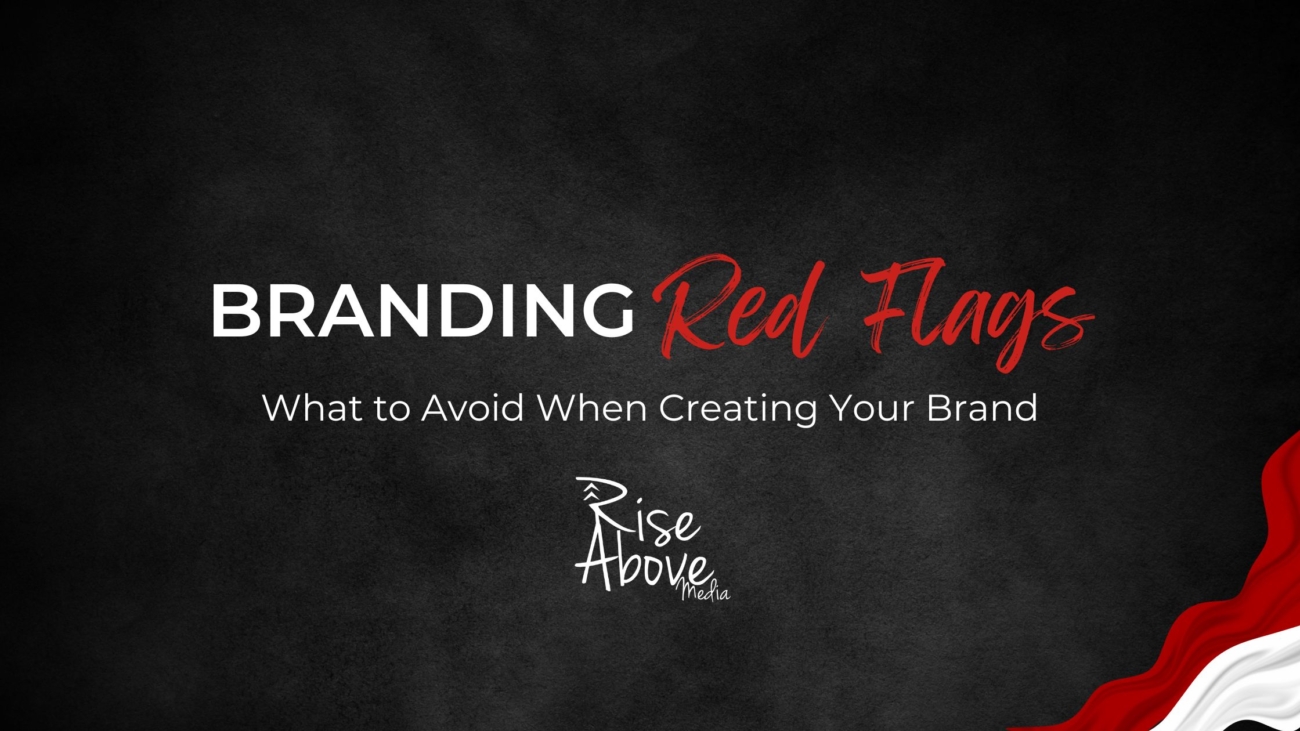Branding is more than just a logo or a catchy tagline—it’s the heart and soul of your business. A strong brand builds trust, establishes credibility, and fosters customer loyalty. However, in the excitement of launching a brand, many businesses make critical mistakes that weaken their impact. Instead of focusing solely on what to do, let’s take a look at the biggest branding red flags you should avoid to ensure your brand is strong, consistent, and built for long-term success.
1. Lack of Brand Identity
Your brand identity is what makes you unique, but if you don’t define it, how will anyone else recognize it? One of the biggest branding mistakes is failing to establish a clear mission, values, and unique selling proposition (USP). If your audience can’t understand what you stand for, they won’t feel compelled to support your brand.
Red Flags to Watch For:
-
- No clearly defined mission or brand values.
-
- Trying to appeal to everyone instead of a specific target audience.
-
- Inconsistent messaging that confuses customers.
Solution: Before launching, take time to define your brand’s identity, mission statement, and core values. Know who you are and who you serve.
2. Inconsistent Visual Branding
Your brand’s visual identity should be consistent across all platforms. If your logo looks different on Instagram than on your website, or if you frequently change colors and fonts, you risk creating brand confusion.
Red Flags to Watch For:
-
- Using multiple logos or changing designs frequently.
-
- No consistency in fonts, colors, or style across platforms.
-
- A generic or overly complicated design that doesn’t stand out.
Solution: Develop a brand style guide with a defined color palette, typography, and logo variations to maintain a consistent and recognizable look.
3. Copying Competitors Instead of Standing Out
It’s natural to look at competitors for inspiration, but directly copying their branding is a major red flag. Your brand should highlight what makes you unique rather than blend into the crowd.
Red Flags to Watch For:
-
- A logo, tagline, or messaging that closely resembles a competitor’s.
-
- Using generic stock imagery instead of original content.
-
- No clear differentiation from others in your industry.
Solution: Conduct competitor research but focus on how you can stand apart. Highlight your unique selling points in your branding and messaging.
4. Inconsistent Brand Voice & Messaging
Your brand’s voice is how you communicate with your audience, and inconsistency can weaken your brand’s credibility. If you’re professional on LinkedIn but casual and playful on Instagram, it can create confusion about your identity.
Red Flags to Watch For:
-
- Switching tones or styles across different platforms.
-
- No clear personality or distinctive voice in content.
-
- Overloading messaging with jargon instead of authenticity.
Solution: Develop a brand voice guide and ensure your messaging remains consistent across all communication channels.
5. Ignoring Your Audience’s Needs & Feedback
Your brand exists for your audience, so if you don’t listen to their needs, preferences, and feedback, you risk losing them. Many businesses focus on aesthetics and trends while neglecting what truly resonates with their customers.
Red Flags to Watch For:
-
- Ignoring customer feedback or failing to engage with your audience.
-
- Creating content that doesn’t align with your audience’s interests.
-
- Lack of engagement on social media or other platforms.
Solution: Conduct audience research, actively engage with your community, and adapt your branding based on feedback to create a stronger connection.
6. Overcomplicating Your Brand Message
If your tagline or mission statement requires too much explanation, it’s too complicated. Clear, concise messaging is key to making an impact.
Red Flags to Watch For:
-
- A vague or confusing mission statement.
-
- Too many marketing messages at once, leading to confusion.
-
- Overloading audiences with excessive information instead of clear, direct messaging.
Solution: Keep branding simple and easy to understand. Make sure your brand message can be communicated in a single sentence.
7. Not Evolving with Time
While consistency is essential, refusing to adapt when necessary can hurt your brand. Industry trends, customer expectations, and technology evolve, and so should your brand.
Red Flags to Watch For:
-
- Resistance to updating branding even when it feels outdated.
-
- Sticking with trends that are no longer relevant.
-
- Ignoring new branding opportunities and industry shifts.
Solution: Regularly evaluate your branding and make necessary adjustments while maintaining your core identity. Stay relevant without losing authenticity.
Your brand is the foundation of your business, and avoiding these common mistakes will set you up for success. By prioritizing authenticity, consistency, and audience connection, you’ll create a brand that not only stands out but also earns lasting trust. By doing this, you will establish authority which is about positioning yourself or your brand as an expert in your field.
If you’re looking to refine your branding strategy, Rise Above Media is here to help. Let’s work together to craft a brand that truly represents your vision! Contact us today!

